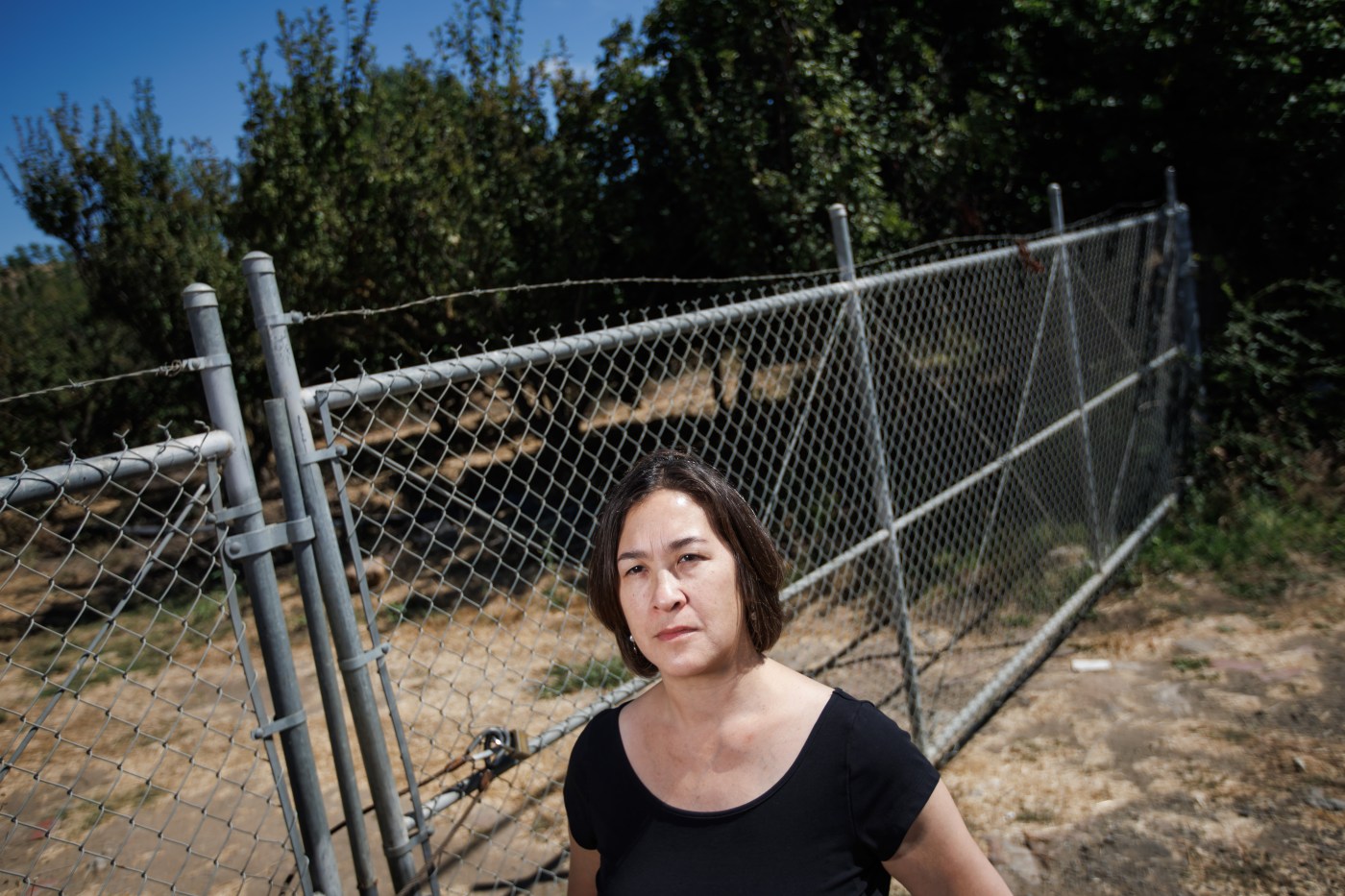
PG&E decision on new San Jose energy project will hurt wildlife in Coyote Valley, environmentalists say
Coyote Valley, a rural expanse of farmland and scenic open space between San Jose and Morgan Hill, has been the center of development battles for decades. Apple proposed building its world headquarters there in the 1980s. Cisco had similar plans in the 1990s.
Now, even though environmental groups and taxpayers have spent $120 million to preserve 1,500 acres of open space and farmland in the past decade, a new battle is shaping up.
State officials last year gave New York company LS Power approval to build a 13-mile long high-voltage transmission line from San Jose to Coyote Valley. The project, according to officials at the California Independent System Operator, the agency that runs most of California’s power grid and chose LS Power over four other competitors for the project, is needed to expand the amount of electricity that can flow in and out of Silicon Valley to handle a big jump in demand in the coming years from more electric cars, the expansion of artificial intelligence and population growth.
The wires would be buried underground. But the controversy is over their endpoint.
For the northern part of the project, LS Power paid $56 million last year to buy 10 acres near downtown San Jose next to an existing PG&E substation at the corner of Coleman Avenue and Santa Teresa Street, just west of Highway 87. The company had planned to build the southern endpoint of the project adjacent to PG&E’s Metcalf substation, located along Highway 101 in South San Jose.
But PG&E said no.
So LS Power chose another location, a 14-acre apple and peach orchard at 8262 Monterey Road, about 1 mile south of the Metcalf substation, and signed an agreement with the landowner.
Environmental groups say that’s the wrong place for it.
“Coyote Valley is uniquely important for wildlife habitat, farmland, and for people to get out in nature,” said Alice Kaufman, policy and advocacy director for Green Foothills, a Palo Alto nonprofit group that has worked since 1962 to preserve the open space in Coyote Valley and other parts of Santa Clara and San Mateo counties. “It’s a critical wildlife linkage between the Santa Cruz Mountains and the Diablo Range.”
Green Foothills, along with the Sierra Club and Santa Clara Valley Audubon Society, are particularly concerned that after it bulldozes the orchard, the company plans to construct buildings up to 50 feet high to house transformers, converters and other equipment, along with several lightning rods up to 100 feet high, on the site, surrounded by security fencing.
“San Jose is the third largest city in California,” Kaufman said. “And Coyote Valley is the last large, undeveloped part of it. We shouldn’t be paving it over. We should be preserving it.”
PG&E’s Metcalf substation, as seen from Highway 101 in South San Jose, Calif., in July, 2024. (Photo: Google street view)
The California Public Utilities Commission has primary authority over the project. It held a hearing last week in San Jose, which was attended mostly by opponents.
Kaufman said the environmental groups support the new transmission line, an estimated $600 million project that will help expand renewable energy. But they want the southern endpoint of it to be the PG&E Metcalf substation.
Officials at LS Power say that was their preference too. In an environmental study published in April, they selected PG&E’s Metcalf substation as the “top ranked” location for the facility, and said it would have fewer impacts on “aesthetics, agriculture, air quality, biological resources, noise, and wildfire hazard” than the orchard site.
“We weren’t asking them to relocate the substation,” said Jacob Diermann, the project manager for LS Power. “We were asking them to use the maintenance yard adjacent to it.”
Lynsey Paulo, a PG&E spokeswoman, said in a statement that “this property is currently occupied by multiple PG&E departments for various uses. PG&E has plans to use existing substation space to expand the substation facilities and capacity to serve our customers and future energy demand in the South Bay.”
Related Articles
PG&E likely to shut off power in parts of Alameda, Contra Costa counties
PG&E customers face monthly bill increase — a new one — in October
Inflation starts to ease in Bay Area — finally — after years of painful prices
PG&E bills head higher again — but earlier decreases ease sting
Last-minute plan to help Californians with electric bills fails
The site has strict security. On April 16, 2013, around 1 a.m., a team of gunmen opened fire on the substation. They hit 17 transformers, causing 52,000 gallons of oil to leak. Although the attack did not cause major blackouts or injuries, it caused $15 million in damage. The FBI investigated. Afterward, state lawmakers and the Federal Energy Regulatory Commission ordered increased security at electrical substations across California and the nation. The gunmen were never caught.
PG&E’s Paulo noted that the site “requires heightened security and access controls and strict compliance obligations.”
LS Power hopes to break ground in 2026 on the project and finish by 2028. A draft environmental impact statement is due out in February.
Hardball tactics could be played. The PUC could order PG&E to allow LS Power to build the facility next to the Metcalf substation. LS Power also has the power of eminent domain on the project and could take land that it needs, although it would likely end up in a court battle with the owner over the valuation. Environmentalists could sue if they find shortcomings in the environmental documents.
Meanwhile, Caltrans, the Santa Clara Valley Open Space Authority and other organizations are completing a $5 million study to build an underpasses or maybe an overpass on Monterey Road near the orchard to help deer, badgers, coyotes and other animals that are regularly killed by cars migrate across it and Highway 101 to connect the Santa Cruz Mountains and Diablo Range.
“We need to be advancing clean energy and biodiversity at the same time, not sacrificing one for the other,” said Andrea Mackenzie, general manager of the open space authority, a government agency in San Jose that has preserved 30,000 acres of open space, farmland and wildlife habitat since 1993. “We should choose a site that’s already disturbed and already in energy.”
“We can do better than this,” she said. “We must do better than this. It is an unnecessary conflict.”
The orchard along Monterey Road, where an electrical energy facility has been proposed to be constructed, is seen in San Jose, Calif., on Sept. 20, 2024. (Dai Sugano/Bay Area News Group)


